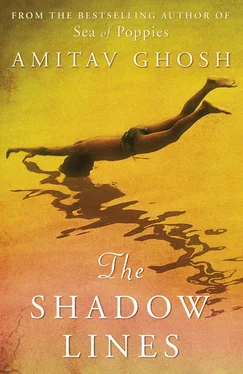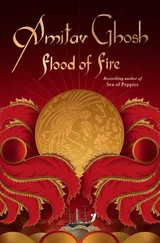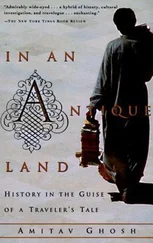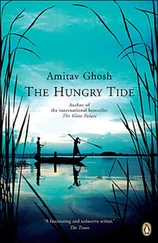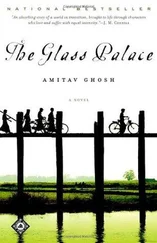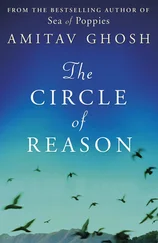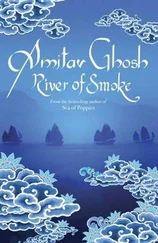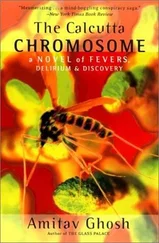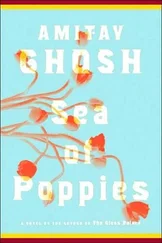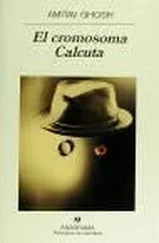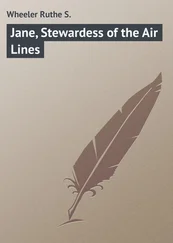Amitav Ghosh - The Shadow Lines
Здесь есть возможность читать онлайн «Amitav Ghosh - The Shadow Lines» весь текст электронной книги совершенно бесплатно (целиком полную версию без сокращений). В некоторых случаях можно слушать аудио, скачать через торрент в формате fb2 и присутствует краткое содержание. Год выпуска: 2011, Издательство: John Murray, Жанр: Современная проза, на английском языке. Описание произведения, (предисловие) а так же отзывы посетителей доступны на портале библиотеки ЛибКат.
- Название:The Shadow Lines
- Автор:
- Издательство:John Murray
- Жанр:
- Год:2011
- ISBN:нет данных
- Рейтинг книги:3 / 5. Голосов: 1
-
Избранное:Добавить в избранное
- Отзывы:
-
Ваша оценка:
- 60
- 1
- 2
- 3
- 4
- 5
The Shadow Lines: краткое содержание, описание и аннотация
Предлагаем к чтению аннотацию, описание, краткое содержание или предисловие (зависит от того, что написал сам автор книги «The Shadow Lines»). Если вы не нашли необходимую информацию о книге — напишите в комментариях, мы постараемся отыскать её.
The Shadow Lines — читать онлайн бесплатно полную книгу (весь текст) целиком
Ниже представлен текст книги, разбитый по страницам. Система сохранения места последней прочитанной страницы, позволяет с удобством читать онлайн бесплатно книгу «The Shadow Lines», без необходимости каждый раз заново искать на чём Вы остановились. Поставьте закладку, и сможете в любой момент перейти на страницу, на которой закончили чтение.
Интервал:
Закладка:
All right, said Malik. But this is your last chance — let’s go and look.
We went back to the newspaper section and took down the volume for January and February, 1964. Opening it, we began to go through the papers backwards, turning first to the sports pages. Soon Malik found a reference to the visiting English cricket team. A few pages later we stumbled upon a headline which said: MADRAS TEST BEGINS TODAY.
That’s it, I cried triumphantly. That was the day, I remember now. I listened to the commentary on the radio after I got home from school.
It was the edition of Friday, 10 January 1964.
Quickly we turned the limp, yellowing pages back until we came to the front page.
So where’s your riot? said Malik.
The lead story had nothing to do with riots of any kind, nor with Calcutta: it was about the 68th session of the Congress Party in Bhubaneshwar. Dazed and disbelieving, I read through a report which quoted a speech in which Mr Kamaraj, the party president, had extended an invitation to everyone who had faith in the ideology of socialism and democracy to come together in the common task of building a new society.
It looks, said Malik, as if your riots didn’t manage to make it to the front page.
But a moment later, I found what I had been looking for: a short report at the bottom of the page, with a headline which said: TWENTY-NINE KILLED IN RIOTS.
There, I said, pounding on the paper with my fist. There: Read it for yourself.
I stood back panting, light-headed with relief, and watched his face as he read the report. He read it once, slowly. A frown appeared on his forehead, and he went back to the beginning and read it through again.
Then he looked up at me and said: Didn’t you say the riots happened in Calcutta?
Yes, of course, I answered.
That’s strange, he said, tapping the open newspaper. Because these riots here happened in Khulna, in East Pakistan, across the border from Calcutta.
The floor of that quiet, familiar library seemed to drop away under my feet leaving me suspended in space. I would have fallen if Malik had not put out a hand to hold me steady. Holding myself upright with both hands, I leant over the desk and read the report.
It said the army had been called out the day before in Khulna, when a demonstration had turned violent and ended in a riot.
It’s strange, said Malik, looking at me curiously. It’s really very strange that you should remember a riot that happened in Pakistan.
Then he nodded and went away.
Long after he had gone, it occurred to me that newspapers carry the news a day late. I turned the pages to the edition of Saturday, 11 January 1964, and sure enough, there it was: a huge banner headline which said: CURFEW IN CALCUTTA, POLICE OPEN FIRE, 10 DEAD, 15 WOUNDED.
Indistinctly, through the white haze that was swirling before my eyes, I noticed another headline, at the bottom of the page. It said: KUNDERAN’S DAY AT MADRAS, UNBEATEN 170 IN FIRST TEST. And right above it was a tiny little box item in bold print, with the headline: SACRED RELIC REINSTALLED, which said ‘the sacred hair of the Prophet Mohammad was reinstalled in the Hazratbal shrine in Srinagar today amongst a tremendous upsurge of popular joy and festivity throughout Kashmir’.
It was thus, sitting in the air-conditioned calm of an exclusive library, that I began my strangest journey: a voyage into a land outside space, an expanse without distances; a land of looking-glass events.
It is said that the sacred relic known as the Mu-i-Mubarak — believed to be a hair of the Prophet Mohammad himself — was purchased by a Kashmiri merchant called Khwaja Nur-ud-din in Bijapur (near Hyderabad) in the year 1699. The following year the sacred relic was transported to the valley of Kashmir. This is only one version of the provenance of the relic; there are several others. It is agreed, however, that the arrival of the relic was greeted by a great tumult of joy in the valley. People are said to have marched in their thousands from every part of Kashmir — even from such distant and remote eyries as the Banihal Pass — in order to get a glimpse of the relic. Later, the relic was installed at the picturesque Hazratbal mosque near Srinagar. This mosque became a great centre of pilgrimage, and every year multitudes of people, Kashmiris of every kind, Muslims, Hindus, Sikhs and Buddhists, would flock to Hazratbal on those occasions when the relic was displayed to the public. This is well attested, even by those European observers whose Christian sense of the necessity of a quarantine between doctrines was outraged by the sight of these ecumenical pilgrims. Thus, over the centuries, the shrine became a symbol of the unique and distinctive culture of Kashmir.
On 27 December 1963, two hundred and sixty-three years after it had been brought to Kashmir, the Mu-i-Mubarak disappeared from its place in the Hazratbal mosque.
As the news spread, life came to a standstill in the valley of Kashmir. Despite the bitter cold (the weather columns of the Delhi papers note that the water mains were frozen in Srinagar that day), thousands of people, including hundreds of wailing women, took out black-flag demonstrations from Srinagar to the Hazratbal mosque. Schools, colleges and shops pulled down their shutters all over the valley and buses and cars vanished from the streets.
The next day, Sunday, 29 December, there were huge demonstrations in Srinagar, in which Muslims, Sikhs and Hindus alike took part. There were a number of public meetings too, which were attended and addressed by members of all the major religious communities. There were some incidents of rioting and a curfew was quickly declared by the authorities. But the targets of the rioters (and with what disbelief we read of this today) were not people — neither Hindus, nor Muslims, nor Sikhs — but property identified with the government and the police.
The government blamed these attacks on ‘anti-national elements’.
Over the next few days life in the valley seemed to close in upon itself in a spontaneous show of collective grief. There were innumerable black-flag demonstrations, every shop and building flew a black flag, and every person on the streets wore a black armband. But in the whole of the valley there was not one single recorded incident of animosity between Kashmiri Muslims, Hindus and Sikhs. There is a note of surprise — so thin is our belief in the power of syncretic civilisations — in the newspaper reports which tell us that the theft of the relic had brought together the people of Kashmir as never before. They ascribe this in part to the leadership of Maulana Masoodi — an authentic hero, forgotten and unsung today, as any purveyor of sanity inevitably is in the hysteria of our subcontinent. He it was, they tell us, who persuaded the first demonstrators to march with black flags instead of green, and thereby drew the various communities of Kashmir together in a collective display of mourning.
In Delhi there was consternation. Prime Minister Nehru appealed for patience and dispatched the highest officials of the Central Bureau of Intelligence and the Home Ministry to find the missing relic. The Premier of Kashmir declared that the theft was a ‘mad act of some miscreants’.
In Pakistan there were meetings and demonstrations in towns and cities in both wings of the country. The religious authorities, usually so quick to condemn idolatry, declared that the theft of the relic was an attack upon the identity of Muslims. Karachi observed 31 December as a ‘Black Day’, and soon other cities followed suit. The Pakistani newspapers declared that the theft was part of a deep-laid conspiracy for uprooting the spiritual and national hopes of Kashmiris, and rumbled darkly about ‘genocide’.
On 4 January 1964, the Mu-i-Mubarak was ‘recovered’ by the officials of the Central Bureau of Intelligence. There were no explanations; indeed, to this day nobody really knows what happened to the Hazratbal relic.
Читать дальшеИнтервал:
Закладка:
Похожие книги на «The Shadow Lines»
Представляем Вашему вниманию похожие книги на «The Shadow Lines» списком для выбора. Мы отобрали схожую по названию и смыслу литературу в надежде предоставить читателям больше вариантов отыскать новые, интересные, ещё непрочитанные произведения.
Обсуждение, отзывы о книге «The Shadow Lines» и просто собственные мнения читателей. Оставьте ваши комментарии, напишите, что Вы думаете о произведении, его смысле или главных героях. Укажите что конкретно понравилось, а что нет, и почему Вы так считаете.
